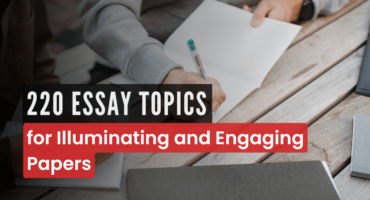Effective HRM Enhances Organizational Performance: Looking through Telstra
Introduction
The business landscape is a minefield full of challenges that organisations need to overcome effectively in order to survive the competition (Wei, et. al., 2015). Human resource management or HRM has, therefore, assumed extreme significance for companies to respond to the changes quickly, adapt to the new situations swiftly and manage its people adeptly. Over the years, effective HRM has become one of the most celebrated aspects of business success, dealing with issues such as globalisation, workforce diversity, employee turnover, etc. (Mondy & Martocchio, 2016). This article discusses the linkage between effective HRM and organisational performance in the context of Australia's foremost telecom company, Telstra Corporation Ltd.
Background - Telstra
One of Australia's most recognised brands, Telstra is a telecommunications and technology giant, providing a wide range of communications services (mobile, voice, internet, pay television, entertainment products, etc) across the nation and having a global footprint in more than 20 countries as of today (DXC Technology, 2017; Telstra website). In Australia alone, the company provides 18 million mobile services (retail), 3.7 million fixed lines and standalone data services, and 1.7 million fixed standalone voice services (retail) (Telstra website).
However, the telecom industry in Australia has gone through rapid changes over the last few years, with newer technologies replacing the old even before consumers could get used to it. Fixed-line telephones disappeared, fixed-line broadband services also lost its lustre. Gradually, wireless broadband gained popularity as much as technologies like VDSL with Fibre-to-the-Node (FttN), Voice over Long-term evolution (VoLTE), LTE mobile broadband, etc. (Harpur, 2018). The fixed-line services began generating little to no revenue for telecom companies. Instead, revenue started to flow from broadband, data and IP facilities, cloud computing, business services and applications, etc. (Harpur, 2018). Price competition is high in the telecom industry and the market is fairly saturated (Harpur, 2018). Hence, performance pressure is high on the telecom companies and they keep strategising newer ways to survive in the market.
Telstra is a big player in the Australian telecom sector. But there is tough competition to deal with from names like Optus, Vodafone, Vocus, TPG, VHA, iiNet and Macquarie Telecom. According to Harpur (2018), the major organisations like Optus, Telstra and Vodafone are substantially investing on their networks every year in order to remain competitive. Telstra also has its own set of challenges to remain among the telecom top-runners.
A Deloitte report (2019) foresees huge transformations in the telecom sector in 2019 with significant roll-outs of 5G technologies, which is set to create fresh revenue potential for the telecom companies worldwide. Telstra, being one of the market leaders, needs to be prepared to meet the new trends and consumer preferences. HRM, therefore, assumes strategic importance in the context to usher in positive developments in the organisational performance.
Telstra - At a Glance Now
The supreme goal of Telstra Corporation Ltd. is to "create a brilliant connected future for everyone" (Telstra website). To work towards this goal, Telstra constantly aligns itself to the changing landscape of the telecom industry. It is aware that telecom is about to witness enormous growth with ever-evolving digital technologies. That is why Telstra's future plan includes a $3 billion investment on new digital platforms (Telstra website). The company wants to continue leading the Australian market by enhancing the customer experiences with smarter products that can address the end-users' pain points. It wishes to establish a standalone infrastructure business unit to bolster performance and it also has plans to simplify its organisational structure and operations to empower its people (Telstra website). To this end, the company has already started striking strategic partnerships with other companies to benefit from the liaison. For example, it has partnered with DXC to rebuild its inept and outdated HR and payroll systems (DXC Technology, 2017). As a part of its Telstra2022 Strategic plan, it also plans to reduce its workforce to a large extent and focus on a smaller talent pool to generate higher customer satisfaction (HRD, 2018).
Telstra's products keep evolving with changing customer trends. In 2018, Telstra achieved huge business success with its Sports Live users, second generation Telstra TV (with free-to-air, pay TV and on-demand-streaming) services, mobile services, app users, 5G-enabled Wi-Fi hotspots, and also with fixed broadband services and retail bundles (Telstra Annual Report, 2018). In spite of these growth in customer base, the company faces lower Average Revenue Per User (ARPU) (Telstra Annual Report, 2018). Therefore, Telstra2022 is of strategic importance to Telstra and it banks on its HRM to manage the planned transformations or changes.
Challenges before Telstra's HRM
In a period of transformation and digital disruption, challenges are common. Most of these challenges can be overcome with effective HRM, as they deal with people, the most important assets of any company. The people need to be managed, optimised, directed, trained and guided well in such times so that their individual performances align with the greater organisational goal (Armstrong, 2012). The company's HRM system is primarily responsible for ensuring that its people and processes are optimally utilised, content and motivated to perform. However, ensuring all of that is often difficult. Telstra's HRM faces many problems related to its people and processes, of which five areas are chosen for discussion in this report. These are:
- Training
- Culture
- Payroll
- Hiring & Retention
- Workforce Diversity
Training
Properly trained employees are essential for smooth functioning of any company. In case of Telstra, with its ongoing transformations and new technologies to enhance customer experiences, it is extremely important to keep its staff trained in the new processes and systems so that they can deliver satisfactorily, in line with the company's vision. Sometimes even the external environment changes like government regulations and industry policies, which Telstra employees must be aware of at all times. For instance, in its Annual report (2018), data privacy and security have been identified as critical areas where expectations change fast. Therefore, Telstra HRM must always ensure that all staff undertake the mandatory trainings and abide by how data is collected, stored and used. Trainings may also be needed across employees in the 5G spectrum services, to ensure seamless delivery of the new technology to Telstra users.
Culture
Most employee feedbacks on Telstra talk about the company's toxic culture, characterised by blind management, over-engineered hierarchical structures and too much politics (Ainsell, 2017; Glassdoor reviews). The discontent among employees about Telstra senior management, the outlook past employees have about the company and its general image as a "soul-destroying monstrosity" (Ainsell, 2017) are all unfavourable for the company's future growth plans. Such a culture breeds worker alienation, where employees do not feel valued and lack the dedication to work towards company's mission (Aryasri & Aijaz, 2013). Hence, the Telstra HRM needs to set the culture right, so that employees feel motivated, and not intimidated, to perform.
Read More
Payroll
Telstra's payroll system did not progress as much as its services and offerings to customers. The system was old, outdated and did not provide the required process clarity (DXC Technology, 2017). Supporting only localised payroll enquiries and depending on paper transactions in a digital age, clearly indicated that Telstra payroll was in need for improved efficiencies. The HRM immediately needed to upgrade the obsolete SAP 4.6C-based payroll systems to SAP ECC 6.0-based systems (DXC Technology, 2017). At a point where Telstra is positioned to transform in a highly competitive telecom sector, complex legacy systems need complete overhaul. New payroll infrastructure may have initial problems, but therein lies the role of HRM to train employees and help them adapt to the new systems.
Hiring & Retention
Hiring and retention is always a challenge for most companies' HRM, as much as it is for Telstra's. More so, because Telstra plans to substantially reduce its workforce to simplify processes (HRD Australia, 2018). In such a scenario, retaining the right employees becomes more important than hiring new ones as Ghansah (2011) has rightly observed. Resource reduction may generate feelings of insecurity among workers and they may start feeling less valued by the company. This can, in turn, lead them to become unproductive and alienated from company goals, none of which is a desirable outcome. Hence, Telstra HRM must efficiently manage the change, without hurting its people's professional health.
Workforce Diversity
Although Telstra is attentive towards workforce diversity and inclusion, it has often attracted criticism for unequal approaches towards its employees. According to one research, the company is still far behind achieving gender balance in its workforce, with only 31% of its employees being women, compared to the national standard of 46% women representation in workforces (Boyd, n, d.). Telstra's CEO had also publicly announced the company's intent to achieve a 50% women composition in its recruitment drives (Koehn, 2017). An inclusive workforce also attracts best talents and thereby accelerates a cultural shift in the organisation (Badenoch, 2018). Hence, Telstra HRM needs to achieve this.
Telstra: Leveraging Effective HRM in Improved Organisational Performance
There are many HRM frameworks that explain how good HR practices can lead to positive HR outcomes and thereby bring about positive organisational impacts. The simplest of these is the Standard Causal Model of HRM, which is also the most popular. In this model, the overall business strategy guides the HRM strategies and the ensuing HR practices eventually achieve improved internal performance and financial performance (Digital HR Tech, n. d.).

Telstra's overall strategy is clear: cost reduction, transformation and customer satisfaction (Annual report, 2018). The Telstra2022 plan outlines the company's future intentions. With that in mind, and considering the five key challenges identified above, Telsra's HRM must immediately begin with setting the culture right. As Aryasri & Aijaz (2013) observed, culture is crucial for establishing and maintaining a high-performing organisation. The hierarchies and micro-management with blind focus on profits must be dissolved to create a more inclusive environment, where each employee feels valued. Unless they feel valued, they can neither absorb training, nor identify with the company objectives. Either way, they would remain unproductive. And unproductive employees are cost-intensive. Therefore, it would be advisable for Telstra's HRM to first eliminate worker alienation completely, then assess productivity to be able to retain the right talents and train them next in the new systems and technologies. Payroll systems are already being upgraded and just needs to be maintained. Along with that, Telstra should continue improving the men to women ratio in its workforce across all ranks year on year to establish its image as a responsible employer. These five areas, if managed with appropriate HR policies and practices, can fetch much improved HR outcomes for Telstra, and eventually lead to the organisation's enhanced financial performance.
Learning from the Telstra Case
Telstra is already a leader in Australia's telecom sector. However, sometimes success breeds complacency. Apparently, that has what has happened at Telstra. In the run for leading the telecom sector in Australia and enjoying an enviable customer base, Telstra has slightly overlooked its people aspects. The company invested on networks and technologies, innovated products and services, but paid less attention towards its culture. It did many things right from upgrading systems to working towards sustainability, diversity and inclusion, cost reduction, etc. However, it also needed to tap the professional well-being of employees. Most of Telstra's employees complained of low pay, unrealistic targets, complex hierarchies, unfair senior management and workplace politics. In short, Telstra generated dissatisfied employees. Since employee satisfaction is positively related to an organisation's performance (Mafini & Pooe, 2012), I feel that as an effective HR manager, I must always ensure processes and practices that create happy employees. Happy employees lead to happy organisational cultures, where each one is motivated to perform and thus, lead to high-performing organisations. The other four challenging areas (Training, Payroll, Hiring & Retention and Workforce Diversity) all fall in place once HRM efficiently manages the culture. Therefore, as an HR manager, I would always aim to remain people-focused, instead of being profit-focused. That would help overcome most of the many other HRM challenges, be it at Telstra or elsewhere.
References
Ainsell, L. (2017). Telstra culture and death. Independent Australia [Internet]. Retrieved from https://independentaustralia.net/business/business-display/telstra-culture-and-death,11037
Armstrong, M. (2012). Armstrong's handbook of human resource management practice, 12th edition (12th ed.). London, U.K. ; Philadelphia, Pa.: Kogan Page.
Aryasri, Dr. A. R. & Aijaz, S. S. (2013). Role of Organisational culture in shaping High performing organizations. International Journal of Business and Management Invention, 2(1), 7-18. ISSN: 2319 – 8028.
Badenoch, A. (2018). Achieving gender equality: our bias for action. Telstra Exchange. [Internet]. Retrieved from https://exchange.telstra.com.au/achieving-gender-equality-our-bias-for-action/
Boyd, C. (n.d.). Envato and Telstra share their ups and downs in achieving diversity and inclusion change. Seek Limited, Australia. [Internet]. Retrieved from https://insightsresources.seek.com.au/envato-telstra-share-ups-downs-achieving-diversity-inclusion-change
Deloitte (2019). 2019 Telecommunications Industry Outlook. [Internet]. Retrieved from https://www2.deloitte.com/us/en/pages/technology-media-and-telecommunications/articles/telecommunications-industry-outlook.html
Digital HR Tech (n.d.). 5 Human Resources Models Every HR Practitioner Should Know. [Internet]. Retrieved from https://www.digitalhrtech.com/human-resources-models/
DXC Technology (2017). Telstra's HR and Payroll Systems Meet New Workforce Vision. Retrieved from https://www.dxc.technology/au/case_studies/141180-telstra_s_hr_and_payroll_systems_meet_new_workforce_vision
Ghansah, E. (2011). The Role of Employee Retention on Job Performance, A Case Study of Accra Brewery Company Limited, Accra.
Glassdoor Reviews. Telstra. [Internet]. Retrieved from https://www.glassdoor.com/Reviews/Employee-Review-Telstra-RVW12288948.htm
Harpur, P. (2018). Australia - Telecoms Industry - Statistics and Forecasts. Budde [Internet]. Retrieved from https://www.budde.com.au/Research/Australia-Telecoms-Industry-Statistics-and-Forecasts
HRD Australia (2018). Telstra to cut 8,000 jobs. [Internet]. Retrieved from https://www.hcamag.com/au/news/general/telstra-to-cut-8000-jobs/152650
Koehn, E. (2017). Telstra pledges to make job interview shortlists include at least 50% women: Lessons for your business. SmartCompany, Australia. [Internet]. Retrieved from https://www.smartcompany.com.au/people-human-resources/recruitment-hiring/telstra-pledges-make-job-interview-shortlists-include-least-50-women-lessons-business/
Kotter, J. (2013). The Biggest Leadership Mistake of Failing Companies. Forbes. [Internet]. Retrieved from https://www.forbes.com/sites/johnkotter/2013/04/09/the-biggest-leadership-mistake-for-failing-companies/#4b2da5be11ec
Mafini, C. & Pooe, D. (2012). The relationship between employee satisfaction and organisational performance: Evidence from a South African government department. SA Journal of Industrial Psychology, 39(1). doi: 10.4102/sajip.v39i1.1090
Mondy, R. & Martocchio, J. J. (2016). Human resource management. Human Resource Management, Global Edition.
Telstra Annual Report (2018). Retrieved from https://www.telstra.com.au/content/dam/tcom/about-us/investors/pdf%20F/2018-Annual-Report-singlepages.pdf
Telstra website. Our Company [Internet]. Retrieved from https://www.telstra.com.au/aboutus/our-company
Wei, N. R., Baroto, M. B., Salam, Z. A. & Usman, A. (2015). Relationship of Charismatic Leadership and Organizational Change on Business Transformation among Malaysia Small and Medium Enterprises (SMES). Proceeding of the 6th UTM- IBS Postgraduate Colloquium 2015, International Business School, Universiti Teknologi Malaysia, Article C2.











